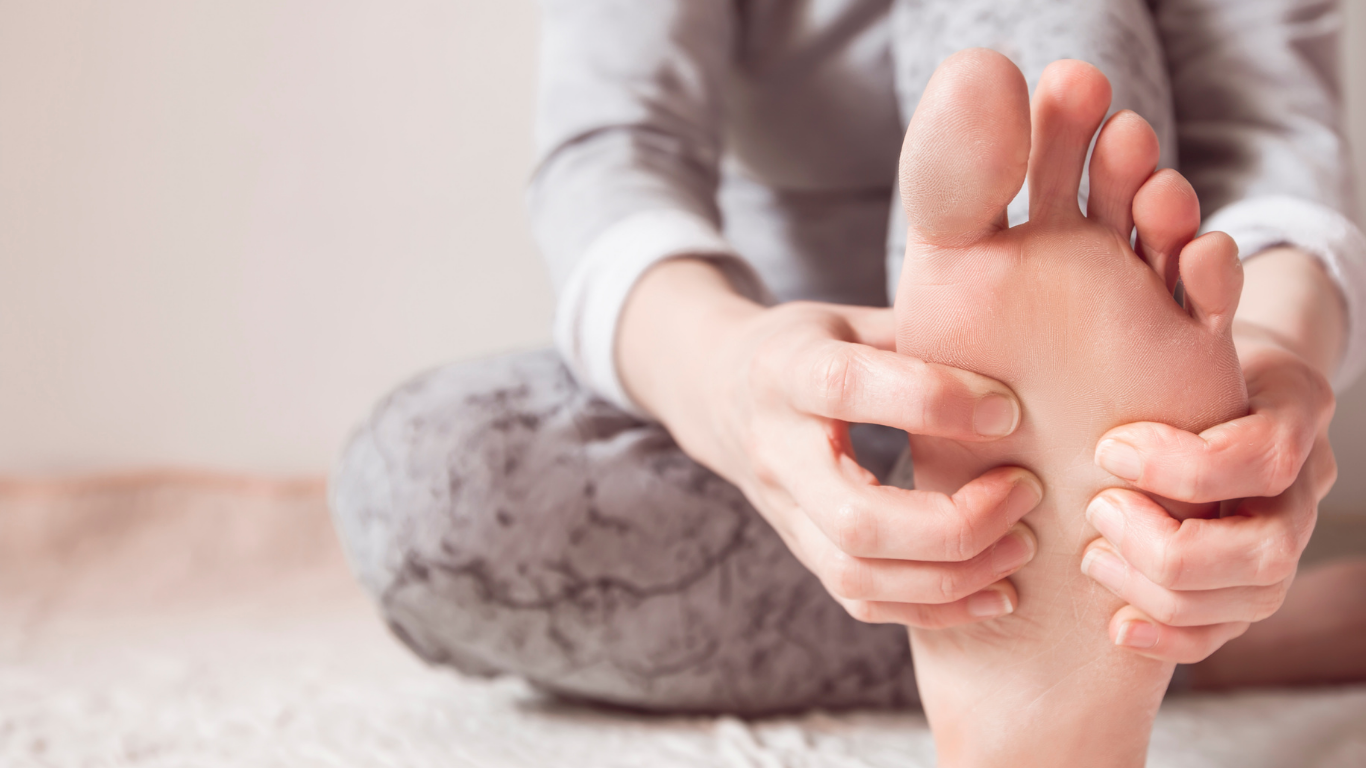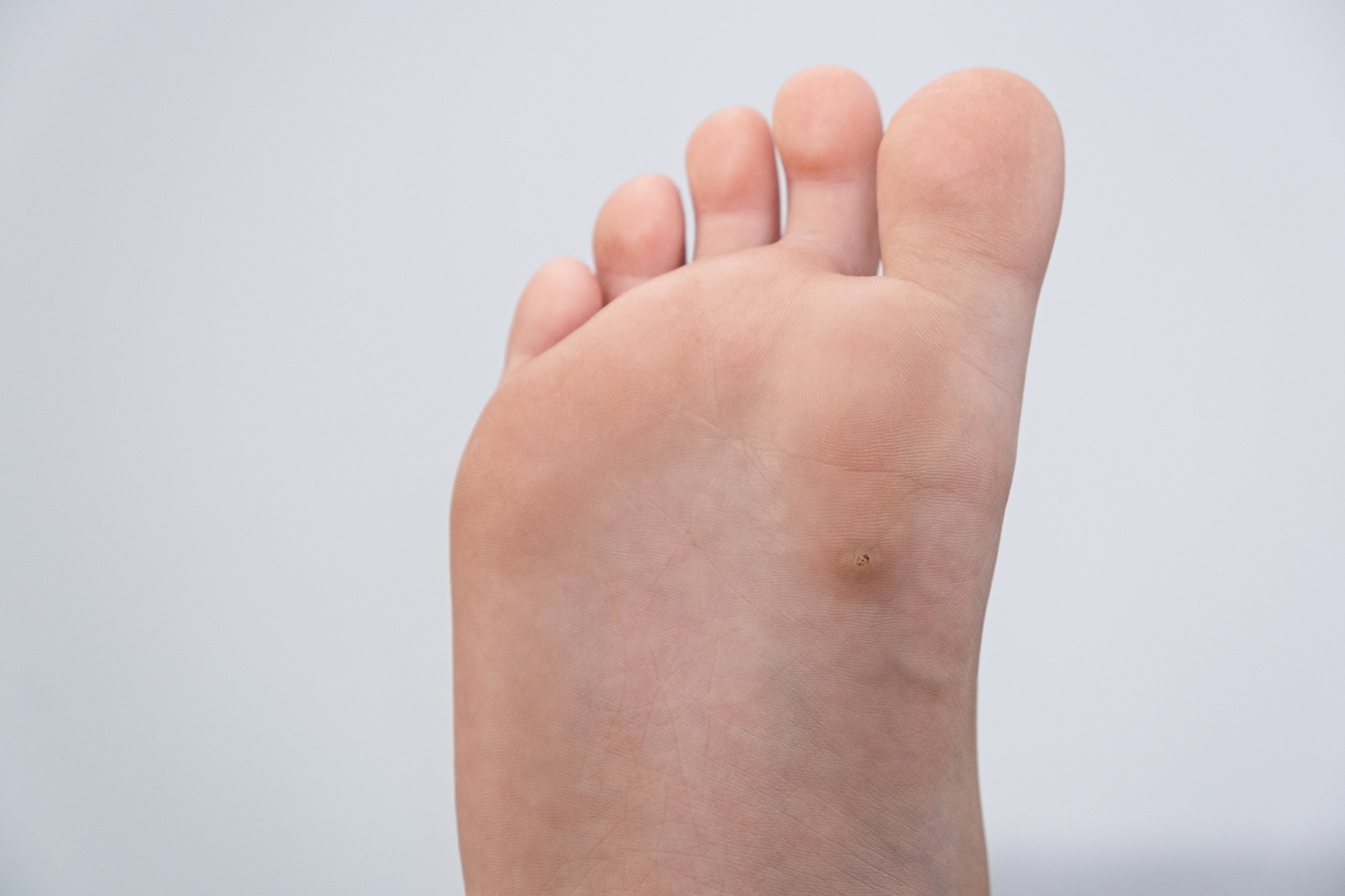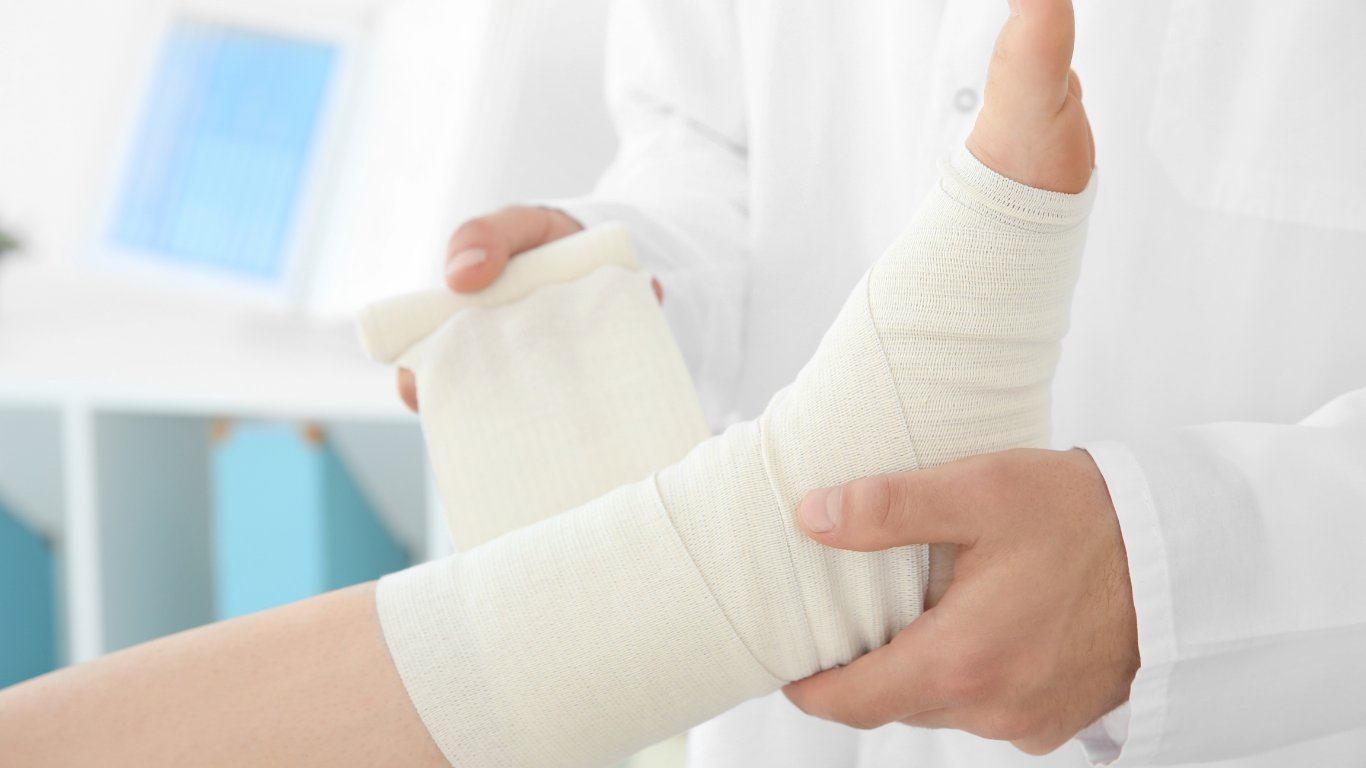ABOUT DR. HERBST

ABOUT DR. HERBST
Dr. Bradley Herbst has been in private practice since 1999. He attended The Ohio State University and graduated Magna Cum Laude from The Ohio College of Podiatric Medicine (now Kent State University). He completed his surgical residency at Ascension St. Vincent’s in Jacksonville, FL, where he was also the Chief Resident of Podiatry. Dr. Herbst is board certified in foot surgery and is a diplomat of the American College of Foot and Ankle Surgery.
After his residency, he spent 15 years as an attending physician at Ascension St. Vincent’s where he helped train numerous successful Podiatric residents in all aspects of Podiatry. During this time he was a key opinion leader for many wound care products, leading lectures on these products all over the country.
Dr. Herbst served 6 years as Chief of Podiatry at Ascension St. Vincent’s. Following that, he served 2 years as Chief of Podiatry at Baptist Medical Center Beaches. Dr. Herbst currently holds hospital privileges at Baptist Medical Center and Ascension St. Vincent’s. He performs his surgeries at Baptist Medical Center South and Ascension St. Vincent’s Saint Johns County. Dr. Herbst practices all aspects of Podiatry, plus he specializes in forefoot surgery, diabetic limb salvage and wound care.
In his spare time, Dr. Herbst gives back to the community as a youth baseball umpire and is a certified high school umpire. He is also the Podiatrist for the Jacksonville Umpires Association. Dr. Herbst is the epitome of a family man; married to his wife since 1998, with a daughter and son.
ABOUT THE PRACTICE
Podiatry Associates of Florida – San Jose Division is a premier podiatry practice located on San Jose Boulevard in Mandarin. We offer cutting-edge treatments for a wide array of foot and ankle conditions. The practice takes pride in its attention to details, boasting fast response times and superior outcomes. Patients struggling with foot issues can rely on us for exceptional and advanced care. We enthusiastically care for all of their patients and welcome everyone to the practice.

SERVICES & SPECIALTIES

Achilles Tendon Conditions
Achilles tendonitis is a common condition. The Achilles is the largest tendon in the body. Achilles tendonitis occurs when the large tendon that runs from the calf to the heel bone becomes irritated and inflamed. The Achilles tendon can withstand great stress; however, it is particularly prone to develop inflammation, resulting in Achilles tendon pain. This pain most often occurs due to overuse and degeneration. Certain athletes, such as long distance runners and sprinters are at increased risk for Achilles tendonitis and even an Achilles rupture.

Arthritis
Arthritis is a complex and very painful disease that can affect patients of all ages. Symptoms include aching pain, swelling, inflammation in your feet and ankles, tenderness, redness or heat in the joints and even limitation in movement. Patient education is important and treating arthritis may include physical therapy, medication and other treatments.

Bunions
A bunion is when your big toe points toward the second toe and causes a bump on the inside edge of your toe. They occur more commonly in women and can sometimes be hereditary. Wearing narrow-toed, high-heels can often lead to the development of bunions. They can cause red, calloused skin along the inside edge of the big toe, a bony bump at the site, pain over the join, and aggravated pressure from wearing shoes.

Corns / Calluses
Corns and Calluses aren’t typically dangerous but they aren’t pleasant either. Usually, they cause pain when wearing shoes and you feel the rubbing on your foot. They can also cause discomfort when you’re walking and your foot rolls forward causing the ball of your foot to ache. Most often caused by improperly fitted shoes or an abnormal gait, there are simple solutions to getting rid of painful corns and calluses.

Custom Foot orthotics
A custom foot orthotic is prescribed by a podiatrist and then custom made to address your individual foot condition which can sometimes involve the foot, let and possibly back. Orthotic insoles are custom designed molds to fit inside your shoes giving your feet, arches and/or heels the support they need.

Diabetic Foot Care
Foot problems are a big risk in people with diabetes. Diabetics must consistently monitor their feet or face severe consequences, including amputation. With a diabetic foot, a wound as small as a blister from wearing a shoe that’s too tight can cause serious damage. Diabetes decreases blood flow, so injuries are slow to heal. When the wound is not healing, it’s at risk for infection which for a diabetic spreads quickly. If you have diabetes, inspect your feet daily. Be certain to look for wounds, bruises, warmth, blisters, ulcers, cuts and nail problems.

Diabetic Ulcers
Diabetic ulcers are a significant concern for people with diabetes. Consistent foot monitoring is crucial, as even minor wounds can lead to severe complications. Diabetes impairs blood circulation, resulting in slow healing of injuries. A small blister from ill-fitting shoes can escalate quickly. If a wound fails to heal, it becomes susceptible to infection, which can spread rapidly in diabetics. If you have diabetes, inspect your feet daily. Look for any signs of wounds, bruises, warmth, blisters, ulcers, cuts, and nail issues to prevent serious complications.

Flat feet / Fallen arches
Flat feet is a condition where the arch on one foot or both feet falls causing the entire bottom of the foot to touch the ground. This causes the feet to turn inward, which also causes instability in feet, ankles and legs. Flat feet can be caused by wear and tear, trauma, injury, torn tendons, arthritis, pregnancy, broken bones, aging, diabetes and obesity. There are several ways to treat flat feet that are non-surgical options but sometimes surgery is necessary.

Fungal infections
This common foot problem can create significant discomfort and disrupt your mobility. Nail fungus is not something to ignore. Proper treatment for a fungal infection can include antifungal medications or foot surgery to remove part of all of the infected nail, depending how severe the infection is.

Hammertoes
A hammertoe is a toe that develops into a painful lump, making it difficult to walk. They usually occur on the smaller toes and typically swell, get red and might even cause a burning sensation. Hammertoes can also develop corns, which are hard calluses on your skin. Over time, the tendons around the flexible hammertoe get stiffer and eventually seize up, which results in rigid hammertoe. Hammertoes are caused by issues with the ligaments and muscles around the joint in the middle of your toe. The soft tissue imbalances and the joint gets stuck in a bent-over position which creates an uncomfortable lump. People with high arches or flat feed are typically more prone to develop a hammertoe.

Heel pain
Heel problems are common and can be extremely painful. Heel pain can be the result from too much stress on the bone in your heel and the tissues that surround it. The stress that often causes heel pain can come from injuries, being overweight, wearing poorly fitted shoes, and bruising from aerobic type activity.

Ingrown toenails
Ingrown toenails can cause redness around your toenail, swelling of your toe, pain, tenderness and can even become infected. Most common causes for an ingrown toenail are not cutting the nail regularly, cutting the toenail too short, foot trauma or wearing shoes that don’t fit properly.

Joint pain
There are more than 30 joints in the foot. When pain occurs in any of these joints it can be a number of issues causing the problem. Those issues include trauma, infection, inflammation, arthritis, bursitis, gout or even structural foot problems. The joint pain can be accompanied by swelling, tenderness, stiffness, redness, bruising, and increased warmth over the affected joints.

Neuromas
A neuroma is an enlarged, benign growth of nerves, most commonly between the third and fourth toes. Often caused by tissue rubbing against and irritating the nerves, symptoms can include sensations of thickness, burning, numbness, tingling or pain in the ball of the foot. Pressure from poorly fitted shoes or an abnormal bone structure can also lead to a neuroma. Treatments generally include orthotics or cortisone injections but sometimes, in more severe cases, surgical removal of the neuroma occurs.

Neuropathy
One of the most common problems a podiatrist encounters is neuropathy. Nearly half of all patients with diabetes will experience this as a result from their central or peripheral damage to the somatosensory system. The symptoms typically begin in the toes and feet and are symmetrical on both sides. Gradually, the symptoms creep up the foot, affecting the leg and eventually can affect the hands and fingers. Some medications can cause neuropathy and therefore patient history is important.

Plantar Fasciitis
Plantar Fasciitis is a common foot condition that causes heel pain. There is a shock-absorbing ligament on the bottom of your foot that is connected to your heel bone. This thick band of tissue is called the plantar fascia ligament and helps to support your arch. It can cause stabbing pain when it becomes inflamed. Plantar Fasciitis can also cause stiffness, tenderness, warmth, or swelling in the sole of your foot. It can also lead to heel spurs, a bony growth that forms where your inflamed ligament attaches to your heel bone. Plantar Fasciitis typically gets worse after long periods of standing, sitting or when you get out of bed first thing in the morning.

Plantar warts
Plantar warts are small, rough growths on the feet. They usually occur on the balls and heels of the feet where the feet bear the most pressure. The warts are caused by a viral infection in the top layer of the skin. The warts are not harmful and eventually, after a couple of years, most warts disappear without treatment. They can, however, cause irritation or minor pain depending on their location.

Sports injuries
We live in an area where youth sports take place year-round and people of all ages stay very active running, biking, and doing aerobic activity due to the warmer temperatures we experience. The year-round activity leads to excessive training which can also lead to sports injuries. These types of injuries result in heel pain, achilles tendonitis, sesamoiditis, stress fractures, posterior tibial tendonitis and several others. Athletes should be aware of the risks and seek a podiatrist’s help when these types of injuries occur to help prevent further risk of injury.

Spurs
A heel spur is a calcium deposit causing a bony protrusion on the underside of the heel bone. Often, heel spurs are painless they can cause pain in the heel. Heel spurs occur when calcium deposits build up or by strains on the foot muscles and ligaments. They are common among athletes who participate in activities where there are large amounts of running and jumping. Treatments can include custom-made orthotics, exercise, medications or cortisone injections. Surgery may also be necessary.

Stress Fractures
A stress fracture is a hairline fracture that develops and worsens slowly over a period of time. Anyone can get a stress fracture, but they are most common among athletes including dancers, runners, and people who enjoy stop-and-start sports like soccer and basketball. The pain from a stress fracture has a tendency to get better and worse. When the pain intensifies with activity and improves with rest, it’s an indicator that the pain is a result of a stress fracture. Once diagnosed, treatment options can include medication, immobilization with a cast or boot and physical therapy.
How important is it to see a Podiatrist?
26
bones
Each foot has 26 bones
¼
bones
Both feet contain nearly ¼ of all the bones of the body
100+
elements
Each foot is made up of more than 100 tendons, ligaments and muscles
1.5X
pressure
Every step places 1.5X your body weight of pressure on your foot
5k - 7k
steps/day
The average person walks 5,000-7,000 steps/day
